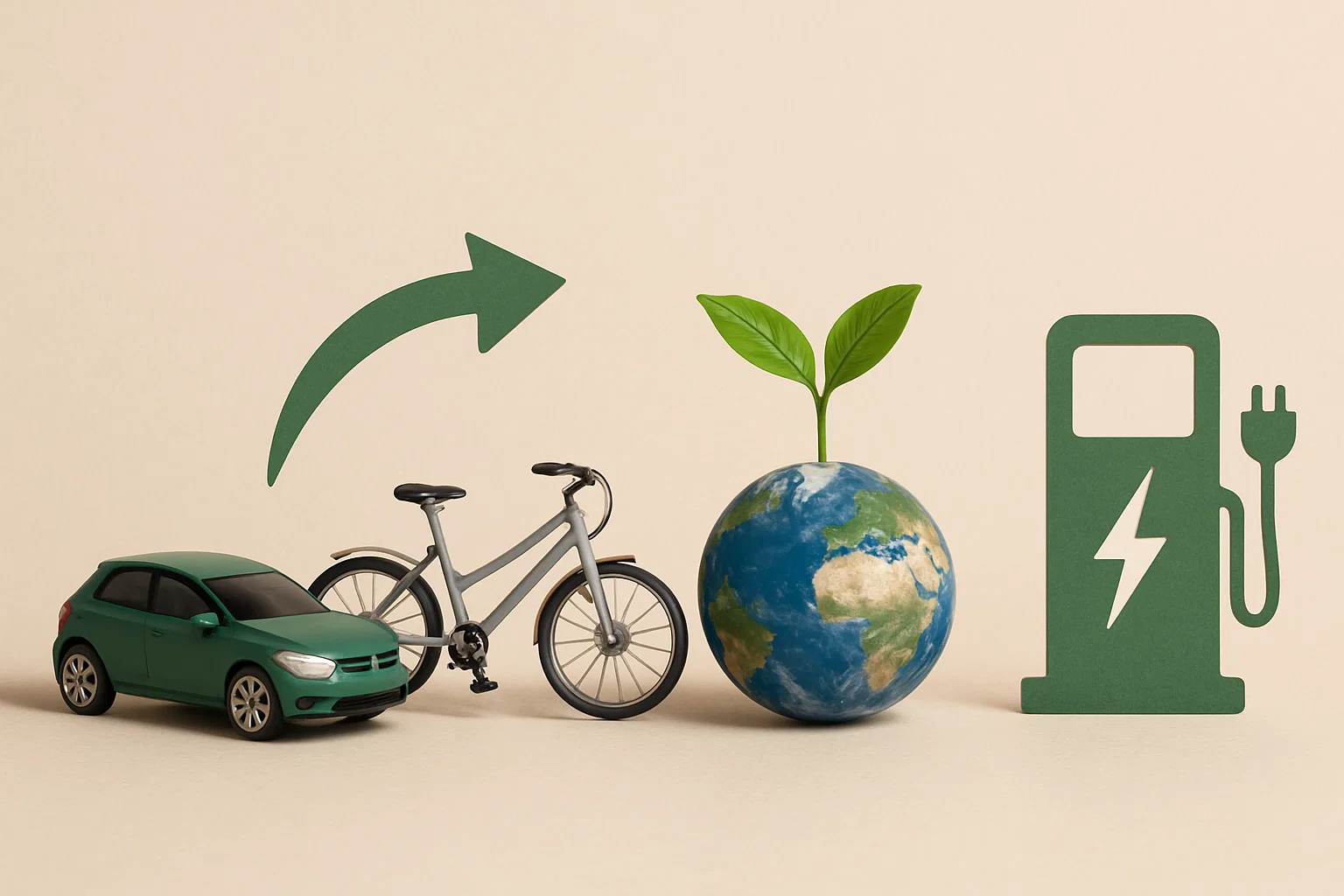Reimagine Your Ride: Choosing Green Commute Alternatives to High-Emission Travel

The daily commute has become an ingrained ritual for millions worldwide, a journey often undertaken in the solitude of a personal vehicle powered by fossil fuels. While the convenience of driving alone to work is undeniable for many, the collective impact of high-emission commuting on our planet is substantial. The constant stream of cars clogging our roadways contributes significantly to greenhouse gas emissions, a primary driver of climate change, and exacerbates urban air pollution, impacting public health and the quality of life in our cities. Recognizing the environmental and societal costs associated with traditional commuting habits, a growing movement is advocating for and embracing greener alternatives that prioritize sustainability and reduce our reliance on carbon-intensive transportation.
The environmental consequences of high-emission commuting are far-reaching. The burning of gasoline and diesel in internal combustion engines releases significant amounts of carbon dioxide, along with other harmful pollutants like nitrogen oxides and particulate matter, directly contributing to the greenhouse effect and air quality issues. The sheer volume of daily commutes, particularly in densely populated urban areas, amplifies this impact, making transportation one of the largest contributors to our overall carbon footprint. Furthermore, traffic congestion caused by single-occupancy vehicles leads to wasted fuel, increased travel times, and reduced productivity. Recognizing this unsustainable pattern, a shift towards greener commuting options is not just an environmental imperative but also a practical necessity for creating more livable and sustainable communities.
Fortunately, a range of viable and increasingly accessible alternatives exist that allow us to navigate our daily journeys to work or study with a significantly reduced environmental impact. By consciously choosing public transit, embracing the health and environmental benefits of cycling, or opting for the collaborative approach of carpooling, we can collectively lessen our reliance on high-emission commuting and contribute to cleaner air, reduced carbon emissions, and more sustainable urban environments. These alternatives offer not only environmental advantages but also potential cost savings, opportunities for physical activity, and a greater sense of community connection.
Paving the Way for a Greener Commute: Exploring Sustainable Transportation Options
Moving beyond the single-occupancy vehicle opens up a world of more environmentally friendly and often more enriching ways to travel:
Public Transit: Shared Journeys, Reduced Emissions
Public transit, encompassing buses, trains, subways, and trams, offers a highly efficient way to transport large numbers of people simultaneously, significantly reducing the per-passenger carbon footprint compared to individual car commutes. By utilizing public transit, we contribute to lower greenhouse gas emissions, reduced traffic congestion, and improved air quality in our cities. Supporting and advocating for robust and accessible public transportation systems is a crucial step towards building sustainable urban infrastructure. Many cities are investing in expanding and modernizing their public transit networks, making it an increasingly viable and convenient option for commuters.
Cycling: Pedal Power for a Healthier Planet and You
Cycling provides a zero-emission, healthy, and often efficient way to commute, particularly for shorter distances. Bikes require no fossil fuels to operate, producing no direct greenhouse gas emissions. Commuting by bike offers numerous health benefits, including improved cardiovascular fitness and reduced stress. With the development of bike lanes, shared bike programs, and electric bikes (like those offered by Rad Power Bikes and Superpedestrian), cycling is becoming a more accessible and appealing option for a wider range of commuters. Investing in a comfortable and safe bicycle and utilizing appropriate safety gear can make cycling a sustainable and enjoyable part of your daily routine. Brands like Trek offer a wide variety of bikes suitable for commuting.
Carpooling: Sharing the Ride, Sharing the Impact
Carpooling, or sharing a ride with colleagues, neighbors, or fellow students who are traveling to the same destination, is a simple yet effective way to reduce the number of vehicles on the road and lower transport-related emissions. By consolidating multiple commutes into a single car journey, carpooling directly reduces fuel consumption and greenhouse gas emissions per person. Establishing carpooling arrangements can be facilitated through workplace initiatives, community groups, or ride-sharing apps. Sharing the ride can also offer social benefits and reduce the stress of driving alone.
Embracing a Greener Journey: Small Changes, Significant Impact
By consciously choosing public transit, cycling, or carpooling over high-emission single-occupancy vehicle commutes, we can collectively make a significant impact on reducing transport-related emissions and fostering more sustainable and livable communities. These greener alternatives not only benefit the planet but can also enhance our personal well-being and connect us more closely with our surroundings and fellow commuters.
Related Blogs

Glimmers of Progress: Ten Policy Victories That Advanced Planetary Health in the Past Year
Insights on how environmental policy affects you (even if you don’t vote) in a sustainable way.

Decoding the Global Commitment: A Breakdown of the Paris Agreement and the Path Forward
Insights on a breakdown of the paris agreement (and what’s next) in a sustainable way.

Ban the Bag: Choosing Reusable Alternatives to Single-Use Plastic Carry Bags
Support local bans and global reduction by opting for cloth, jute, or foldable reusable bags.

Bank for a Better Future: Choosing Ethical Finance to Power a Cleaner Planet
Finance a cleaner planet by opting for ethical banks, green investment funds, and impact fintech.

Beyond the Ban: Navigating the Post-Plastic Bag Landscape Towards True Sustainability
Insights on banning plastic bags in a sustainable way.

Powering Change: Choosing Clean Energy Alternatives to Conventional Sources
Align with energy transition policies by opting for green providers, solar, or co-operatives.
Stay in the Loop
Get tips and insights tailored to your interests — no spam, just sustainability.